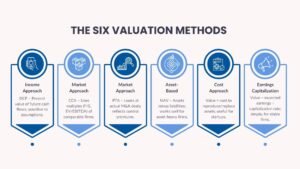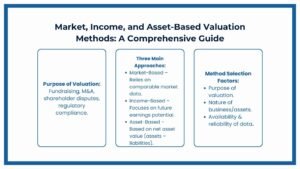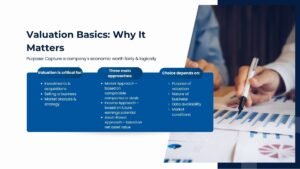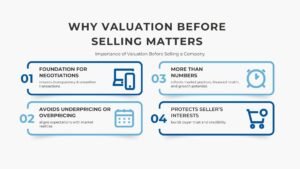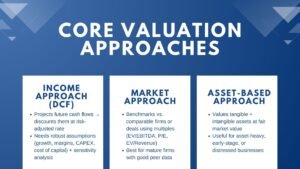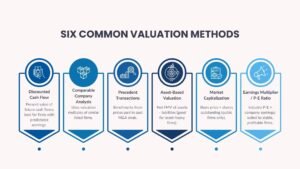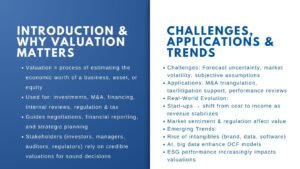
How to Value a Private Company Using Income Approach in Singapore
Learn How to Value a Private Company Using Income Approach in Singapore
The calculation of the value of a privately owned company is much different than that of a publicly owned. It seldom happens that a business trade is publicly sold on the market, and it is also not easy to know the real value of a business when the information is not generally accessible. When intending to sell, do fundraising, being an estate-planning instrument or making a strategic decision, it is necessary to choose the relevant methodology of valuation.
This paper examines the three pillar approaches which are the income approach, market based method and asset based method and how they should be used, and at which time. This discussion also connects with unlocking business value guide to company valuation through ValueTeam Singapore as well as a guide to company valuation Singapore for private company, including how to use valuation multiples in company valuation Singapore.
Why Private Company Valuation Is Distinctive
Valuation of a company is an issue that is challenging in the case of a company that is not MA. Unlike listed businesses whose prices are recognized daily, private companies have no chance to know the market price as it should be because they tend to run limited disclosure. Consequently, valuers have to be very dependent on financial estimates, the insights into an industry, and exercised judgment. Also, idiosyncratic factors such as smaller size, concentrated ownership, tightly held customer or vendor relationships and owner-specific roles that affect the value are prevalent in many private companies. All these unique features entail a careful approach of handling and analysts must alter traditional valuation models to suit the private firm environment.
Income Approach: Discounted Cash Flow and Capitalization
The earnings method is appreciated as the fundamental approach towards the valuation of the privately held business firms. It depends on the estimated future earnings or cash flows of the business and what will be received currently going backwards. The discounted cash flow (DCF) method entails the projection of operating cash flows of a number of years, attains an adequate rate of discount, which is a reflection of the riskiness of the company, and estimate of a terminal value, which is a value beyond the prolongation of the projection period.
When there is no assurance of dependable long run estimates then a model of capitalization of earnings can be applied as an alternative to complete multi-year forecast. It includes gauging a reasonable rate of normalized earnings that is sustainable and multiplying a capitalization rate (1/discount rate) to generate valuation. In both valuations, the risk factor and its consideration, in terms of business volatility, owner dependency and market dynamics, should be taken into account carefully and a clear view of how working capital or non- operating assets are influential to the value should be looked into.
Market Approach: Benchmarking Against Comparables
Market approach determines the valuation of a company by observing other comparable companies that have changed hands or gone through listing on the stock market. Practically, comparables can be obtained by government owned companies in recently purchased companies within the same industry, multiples applicable in the given public company or available through the use of a database focused on the transactions of private companies. Among the more commonly used multiples are price-to-EBITDA, price-to-revenue or price-to-net income, adjusted to take into account variances in the growth rates, business size, geographic presence, or profitability.
Since all the individual private firms have some definite peculiarities, there is a need for adjustments in order to have properly set value benchmarks. Illustratively, a privately owned company may be discounted due to a lack of marketability or being small-scale yet at the same time be offered at a premium because it happens to have niche technology or frequent contracts. A realistic estimate often arrived at through the use of an average of multiple comparables usually approximates a reasonable estimate that can fit into market sentiment but takes into consideration the issues affecting private companies.
Asset-Based Approach: Tangible and Intangible Components
The asset-based is used in deciding the value of the company by looking at the fair market value of all the tangible and non-tangible assets minus the liabilities. This can be an appropriate approach especially to such businesses with a high level of assets or those that do not generate a lot of income like the investments or holding companies. It entails making appraisals of real estate, equipment and inventory and also intangible assets such as trademarks, patents or customer contracts. During a liquidation, the liquidation value variant is peculiar which indicates the net realizable value when the assets are sold at a hastened rate.
As common sense dictates, the asset-based approach can undervalue in businesses whose advantages are intangible (or profitability) drivers, despite not reflecting the earning capacity that the business entails. Nonetheless, it can give a floor value or as a sanity check against the income and market based estimates.
Choosing the Right Method by Context
The choice of the most suitable method of valuation will be dictated by the nature of the business as well as the intention of the valuation. Income-based valuations apply well to private firms that exhibit high rates of growth and good earnings forecasts. Market approach valuations suit businesses that operate on an industry where there are a lot of transactions exchanged or that are peer benchmarked. The asset process method will give more realistic value estimates with regard to asset rich but low profit companies.
In many cases valuers adopt a hybrid or combination method: to apply all the three methods and give a proportionate weight to each in terms of relevance. This does not only give a spectrum of value estimates but it also lets reconciliation to come up with a defendable ultimate result. As an example, a DCF estimate constituted with adjusted multiples of comparables may be used with more weight, and asset-based value may provide the base of a valuation spectrum.
Key Drivers and Adjustments in Private Valuations
Some of the main drivers must be taken into consideration as the valuation methods are in play. DCF models are affected by revenue growth, profit margins, capital intensity and market risks. Comparability adjustments deal with size variation, geography, concentration on client and dependence on owners. Assets are valuable based on how they have lost value through depreciation, obsolescence and quality of collateral.
Besides, it is common to see DLOM as a discount used in the valuation of a private company over a publicly traded company, because of its lower liquidity. Premiums/ discounts controlling (e.g. majority stake the other minority holding) may also affect estimates of equity values. These nuances can be seen through the judicious modifications that have been made at the end of valuation.
Avoiding Common Valuation Pitfalls
There is high judgment risk relative to valuation, particularly in a private setting. Such dangers as excessive optimism in financial projections, selected noncomparable or wrongly identified comparables, or crude discounting rates are typical. The other errors can be because of counting assets twice or count assets and not contingent liabilities or use only one method of counting instead of validating.
In alleviating such problems, valuers ought to be stress-testing assumptions, performing sensitivity analyses, and citing various sources of data. Proprietary databases, modeling experience, and understanding of a given sector is also able to be provided by professional valuation firms and all these are important to a rigorous and defensible valuation result.
Conclusion: How to Value a Private Company Using Income Approach in Singapore
Valuation of private companies is a delicate procedure which is very context dependent and relies on the reciprocity of methods. When applying income, market, or asset-based techniques, the valuator needs to customize the valuation models to the nature of the business as well as the objective of the task. Integrating the techniques and appropriately controlling for risk, comparability and liquidity gives a complete and plausible image of business value.
In a business environment whereby more and more business transactions are shaping up to be private in nature, it is crucial to have a good understanding of valuing a privately held company. Disciplined modeling, triangulation of the approaches, and consideration of assumptions allow companies, investors, and advisors to ensure defensible valuations that can be used in strategic decision-making and negotiation and reporting integrity.


